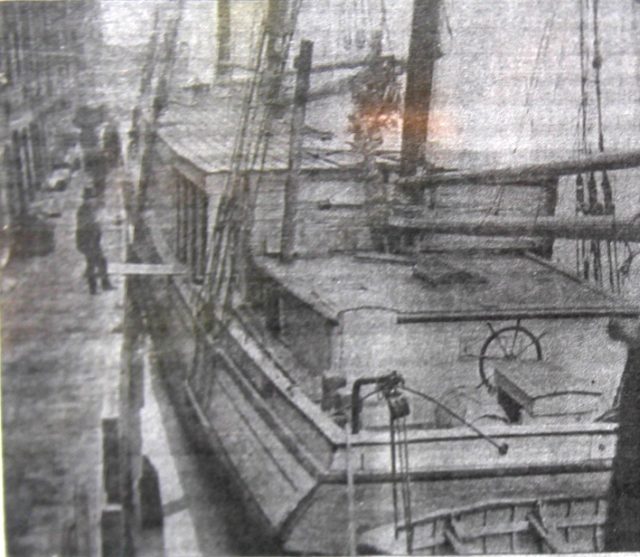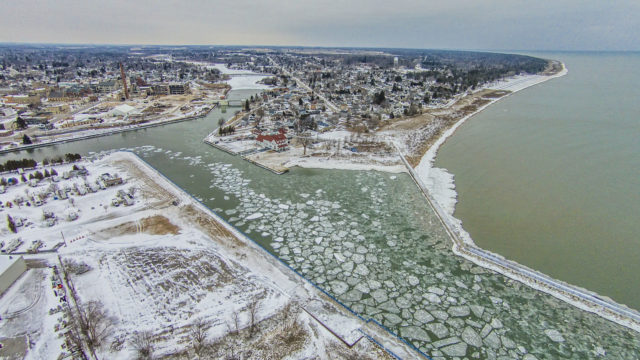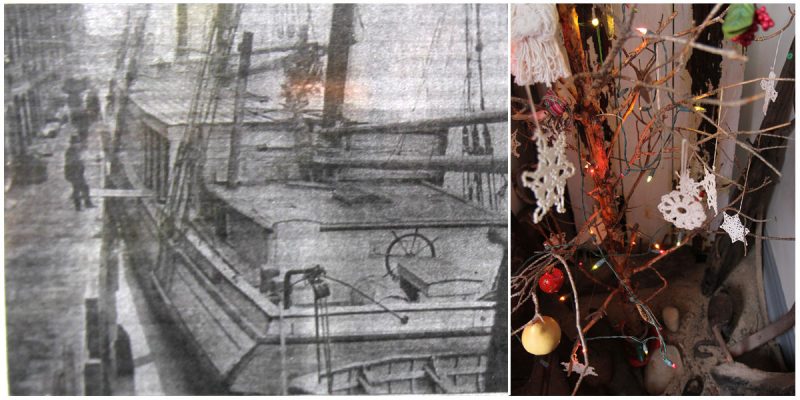In 1912, the Rouse Simmons schooner sunk in a violent storm on Lake Michigan. With a cargo full of Christmas trees, the ship was bound for Chicago when it foundered off Two Rivers, Wisconsin killing all on board.
The Simmons was built by Allan, McClelland & Company in Milwaukee in 1868 and it was named after the businessman Rouse Simmons.

Soon, the schooner joined the sizeable shipping fleet of Charles H. Hackley, a wealthy lumber magnate, and philanthropist. Hackley’s ships served across all corners of Lake Michigan’s coastline, and the Simmons became a workhorse, shipping lumber from company mills to several ports around the lake for roughly 20 years. According to the U. S. Customs Service for the port of Grand Haven, Michigan, the Simmons was making almost weekly runs between Grand Haven and Chicago.
The Simmons exchanged hands several times before it was purchased by Captain Herman Schuenemann in 1910. Along with his brother August, they’ve been trading Christmas trees in Chicago since around the start of the 20th century. He sold trees directly to Chicago residents at the dockside of Clark Street Bridge.6 The children of Chicago called him “Captain Santa” because of the slogan that he used to sell the trees. The slogan was “Christmas Tree Ship: My prices are the lowest” with electric Christmas lights and a tree atop the main mast. Schuenemann sold the trees for between 50 cents and $1 and sometimes he gave away some of the trees to needy families.

In 1912, Schuenemann loaded the ship with 5, 500 trees and planned to make the week-long journey to Chicago. The weight of the trees was far above recommendations, especially in the bad winter weather. Because of the difficult weather, a lot of his competitors didn’t make their own journeys but Schueneman saw an opportunity to make a huge profit and solve his financial problems.
According to local legends, some of the sailors refused to go with him to Chicago because the vessel of the ship was unseaworthy. Despite this, Schuenemann began his journey with trees crammed into every possible corner of the Simmons.
The Rouse Simmons was last spotted low in the water with tattered sails signaling that it was in distress on 23 November 1912 by the Kewaunee Life Saving Station. It was spotted at 2:50 pm by a surfman of the station and the altered station keeper Nelson Craite. The Tuscarora saving ship was sent immediately on a rescue mission, but the Simmons was not seen again.

In 1924 Schuenemann’s wallet was found well preserved because it was wrapped in oilskin. The wreck itself was discovered by Gordon Kent Bellrichard from Milwaukee in 1971.
Many of the trees were found in the ship and two were extracted and shown as exhibits. The anchor of the ship today stands at the entrance to the Milwaukee Yacht Club. All of the remains of the wreck are listed on the National Register of Historic Places.
